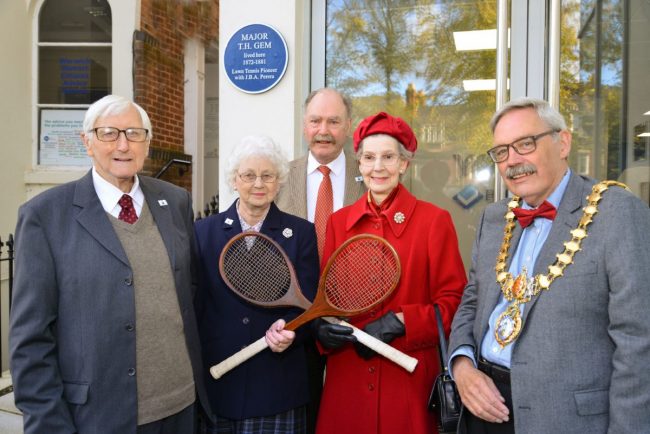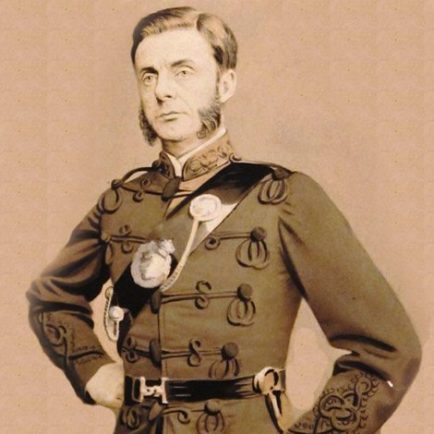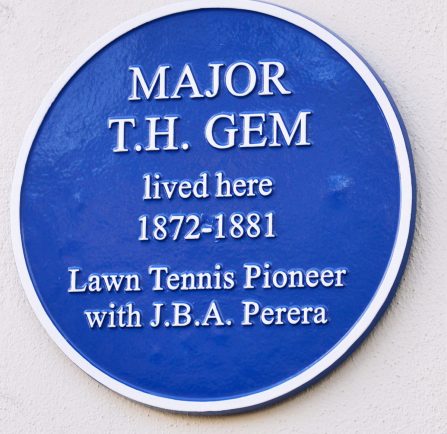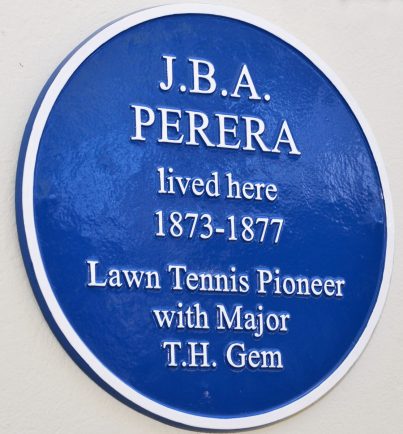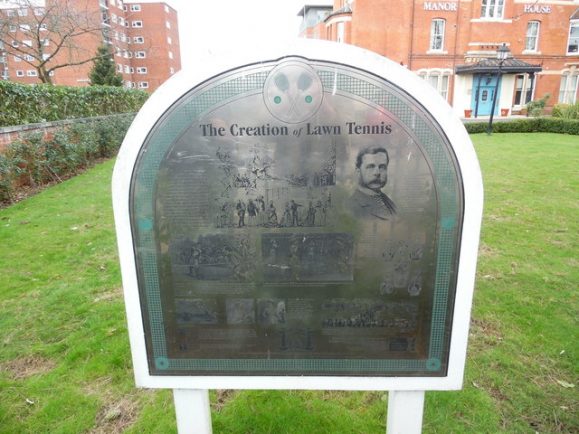THE PIONEERS of lawn tennis have been honoured with blue plaques in Leamington where they invented the game.
Major Thomas Henry Gem and his friend Juan Bautista Luis Augurio Perera established the first organised lawn tennis club in the world in Leamington in 1874.
They had been playing their invention for a decade or more before Major Walter Clopton Wingfield – who had previously been credited with inventing tennis on grass – published his rules for the game, which he called sphairistikè, also in 1874.
Perera was born in Spain but moved to England with his parents in the mid 1820s. In later life he settled in Birmingham and established a successful business importing Spanish merchandise.
He was a keen rackets player and with Gem was a member of a club in Birmingham, about two miles from his Edgbaston home. It was on the croquet lawn of his house that Perera and Gem developed a game combining elements of the games of rackets and Basque pelota in the 1860s, which was to became known as lawn tennis.
In 1873, Perera and Gem moved to Leamington and established a club to play their new game on the lawns of the Manor House Hotel, opposite Perera’s home in Avenue Road.
Gem’s life is well documented as a prominent figure in Birmingham life. Born in the city, he practiced as a solicitor in becoming a magistrate’s clerk in 1856.
Highly active in local life, he wrote for several local publications – both journalism and fiction – and rose to the rank of major in the 1st Warwickshire Rifle Volunteer Corps.
He was a keen sportsman, which alongside rackets, included cricket and athletics. He was recorded as having won a bet by running 21 miles from Birmingham to Warwick in under three-and-a-half hours.
Gem and Perera are now credited as the founders of the grass version of tennis which gave birth to the world-famous Wimbledon Championships.
Their version bore a much closer resemblance to modern tennis than Wingfield’s – most notably in being played on a similar rectangular grass court, rather than the hourglass-shaped court with a ‘waist’ at the net that featured in Wingfield’s sphairistikè.
Gem died aged 62 in 1881. Perera left Leamington three years after Gem’s death and little is known of his life afterwards other than he is believed to have lived until at least 1889.
The Blue Plaque Group – comprising representatives of Leamington History Group, Lillington Literary Society and Leamington Town Council – has placed plaques on the Perera’s former home at 33 Avenue Road, and Gem’s at Bericote House in Hamilton Terrace.
* A plaque has also been put up at 12 Willes Road in honour of Victorian stonemason, builder and politician William Gascoyne.
Leamington History Group note William Gascoyne came to dominate the building industry in late 19th century Leamington.
He was responsible for many buildings in the town, including St Peter’s Roman Catholic Church, the post office in Priory Terrace, the Newbold Terrace mansion Harrington House – now the site of the Spa Centre, Beauchamp Hall – now the Kingsley School, and the rebuilding the railway bridge over High Street.
Unfortunately he was not the best bookkeeper and later went bankrupt. He died aged 76 in 1902, and is buried in Kent where he lived out his final years.

